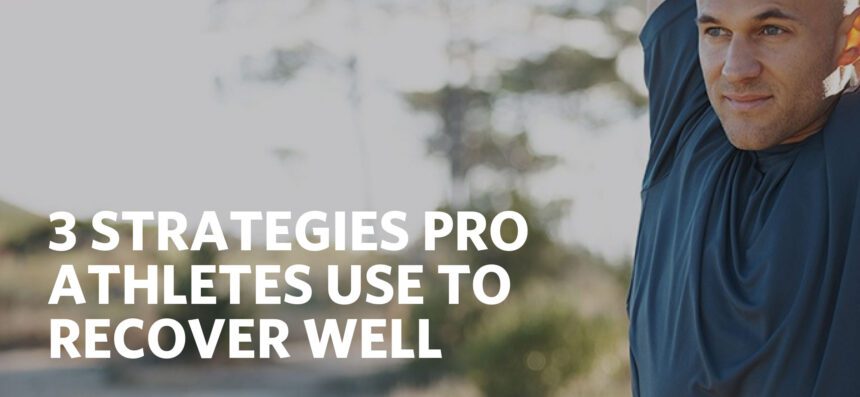Whether it’s the World Series or Wimbledon, pro athletes seem to have superhuman abilities. This success comes from their habits — the little things they do to consistently recover. Here are pro athlete habits that you can adopt to recover successfully.
1. They reduce their injury risk.
At the top of any pro’s training priority list is reducing their risk of injury. After all, their career depends on their ability to stay off the bench. They do this by establishing a network of people who can guide them in strength, conditioning, recovery, and nutrition. It’s all about being in tune with what their body is telling them.
Your game plan: Next time you feel a tweak in your knee, don’t try to push through it without assessing what’s really going on. And take ownership of your health by building your own network of supporters and constantly asking questions, whether it’s about movement correction, nutrition, or anything else that can help you.
2. They don’t skimp on sleep.
Sleep is one of the most undervalued aspects of recovery. And it’s something that serious professional athletes don’t skimp on. Top performers like LeBron James, Roger Federer, Usain Bolt, Steve Nash, and Venus Williams reportedly get over 10 hours of sleep each night.
Your game plan: The average person should aim for seven to nine hours of sleep a night. Create the best sleep environment by buying blackout curtains, using a fan for ambient noise, setting the temperature between 67-71 degrees, and removing pets and illuminated clocks from your room. You’ll notice the difference in your alertness and mood when you’re rested.
3. They use physical therapy, even if they’re healthy.
For pros, physical therapy isn’t just a six-week, 12-visit regimen; it’s part of ongoing maintenance to keep their bodies in top condition. This proactive approach helps them stay ahead of problems and extend the length of their careers.
Your game plan: Use your downtime to balance out any repetitive movements you make, and talk to a physical therapist or coach about strategies to combat the aches and pains of daily life. This might include passive or active recovery, like stretching, foam rolling, or corrective exercises designed for getting a small muscle group stronger and helping the body move more efficiently.


